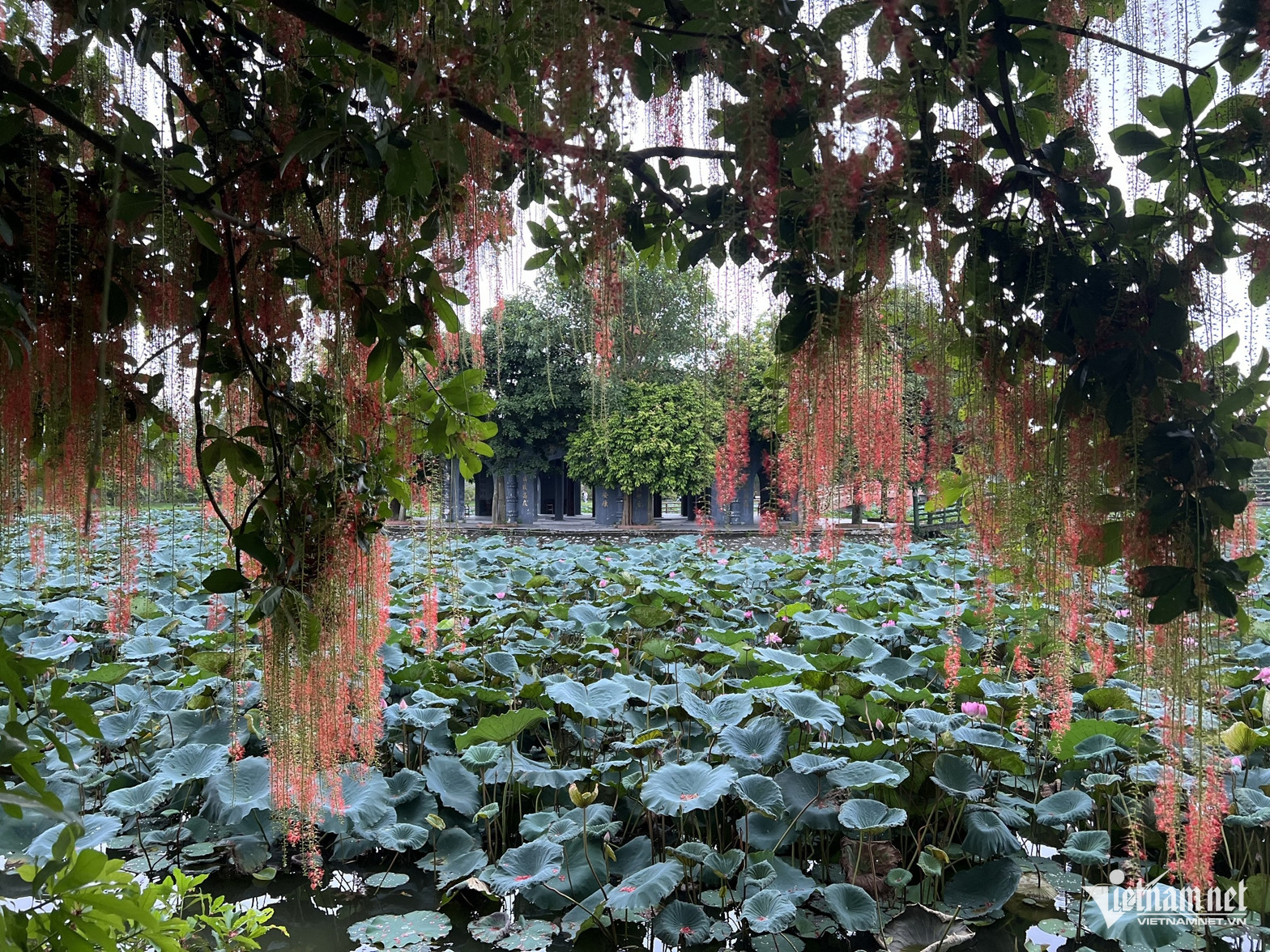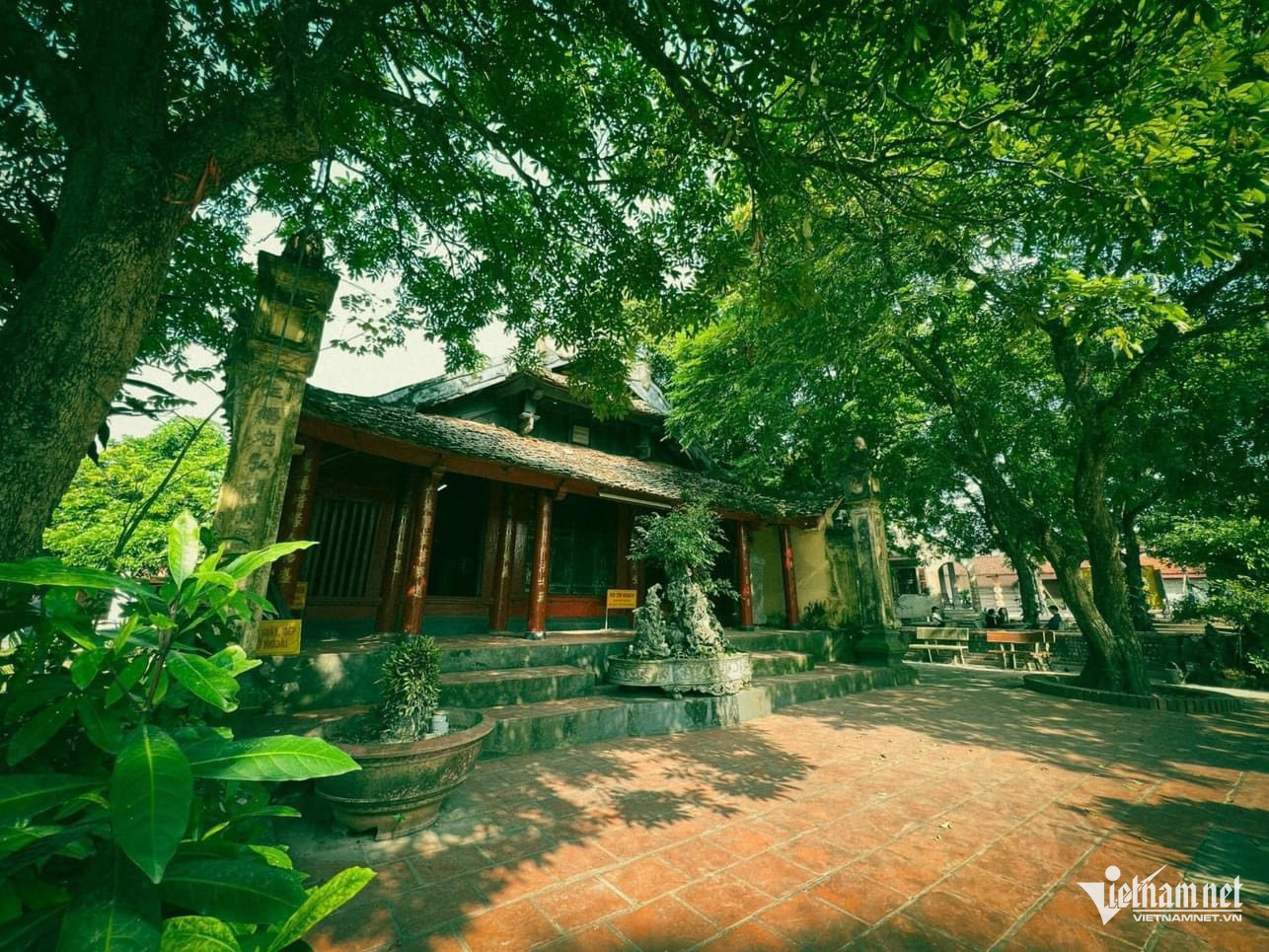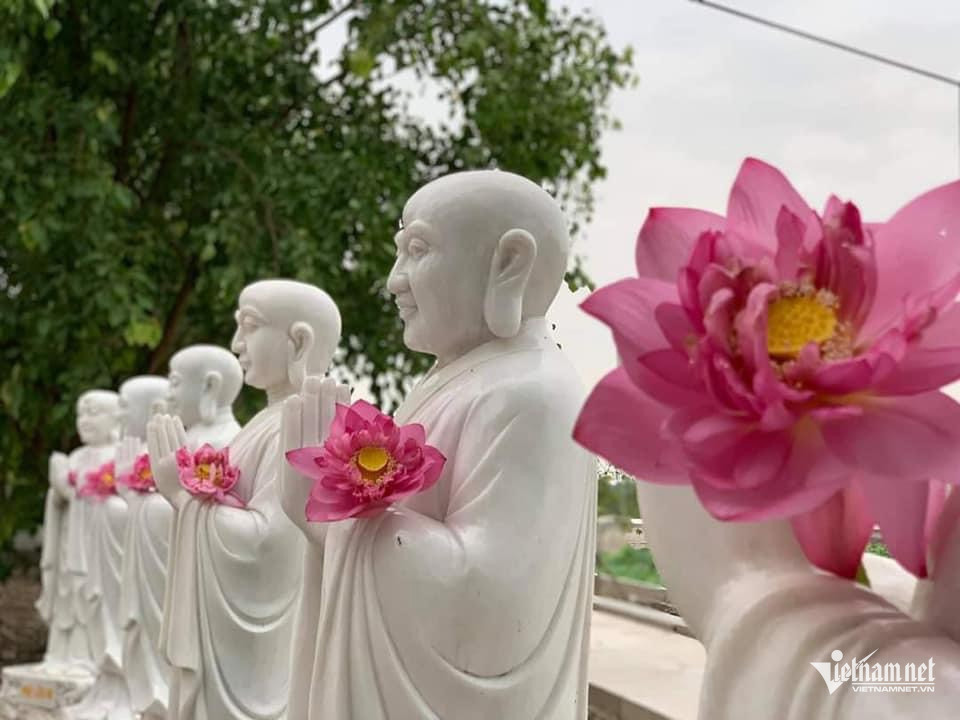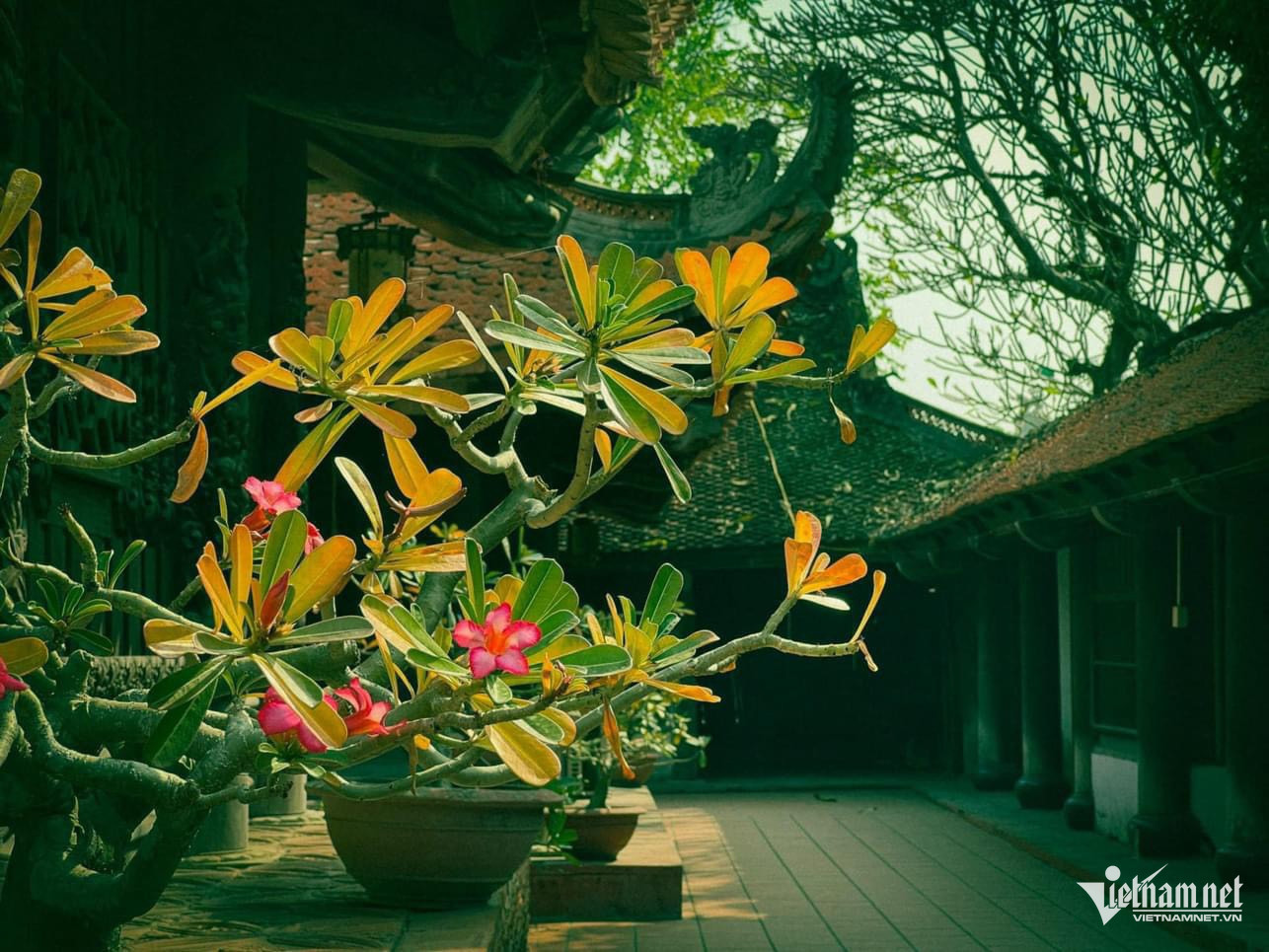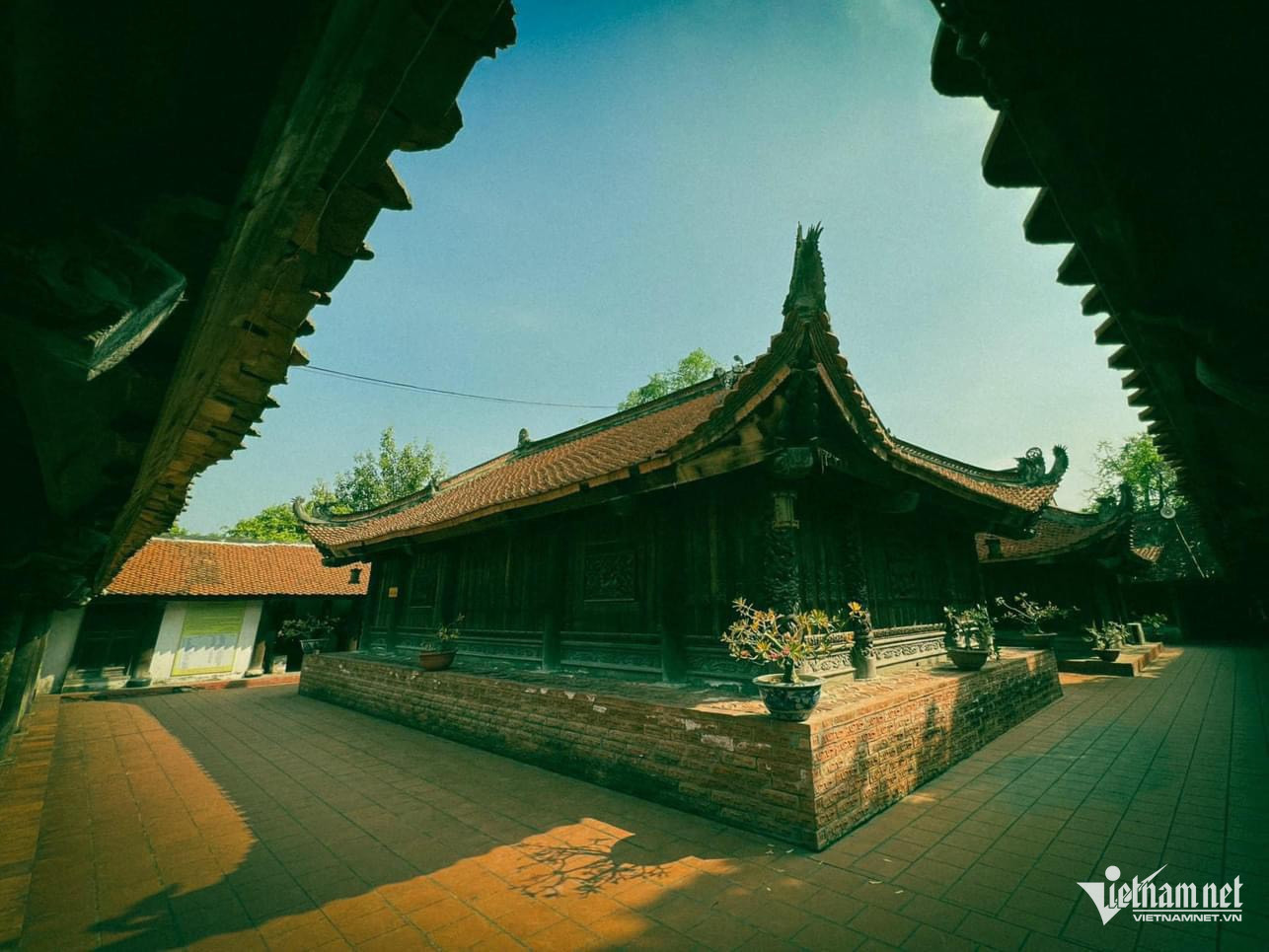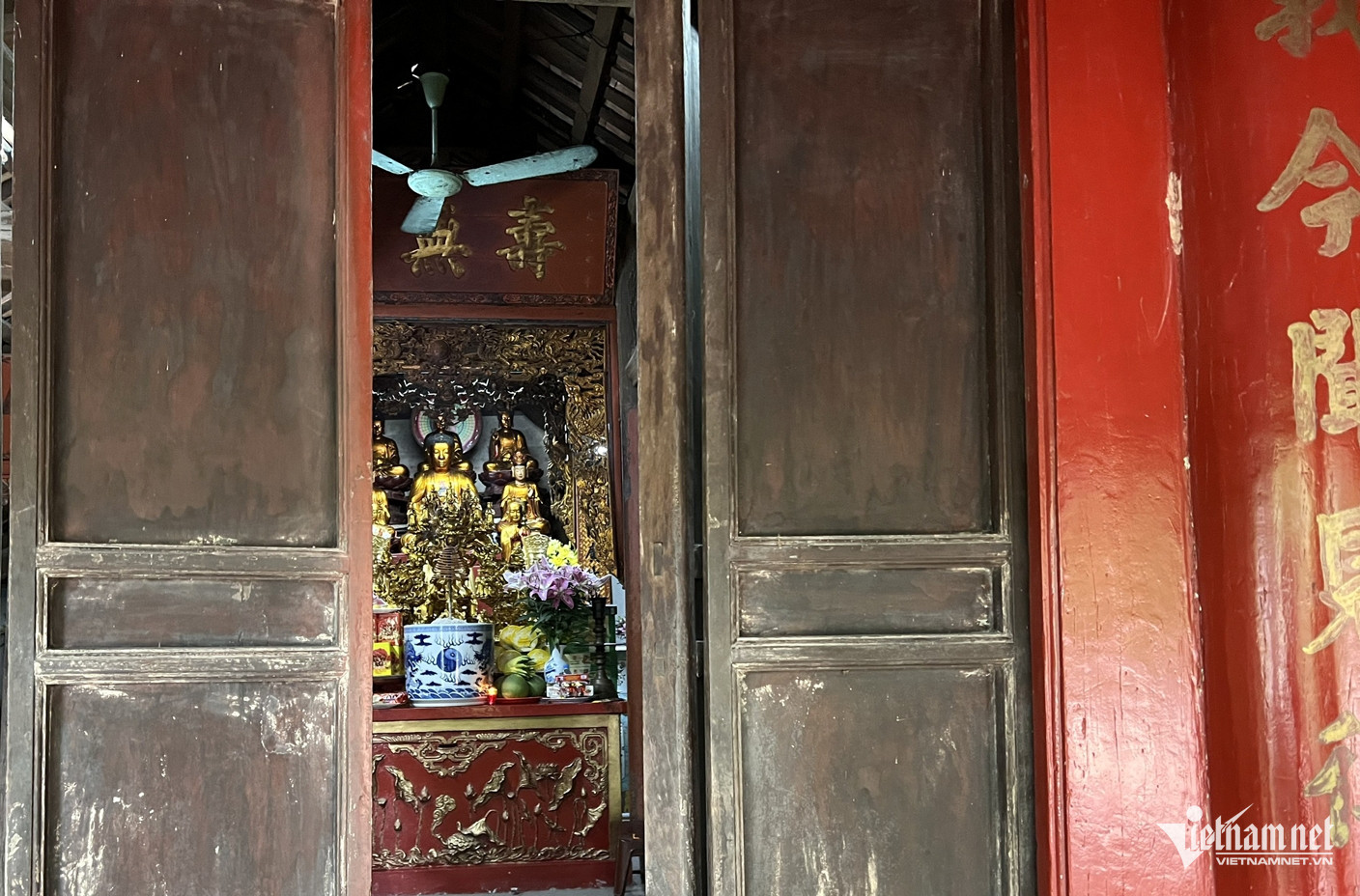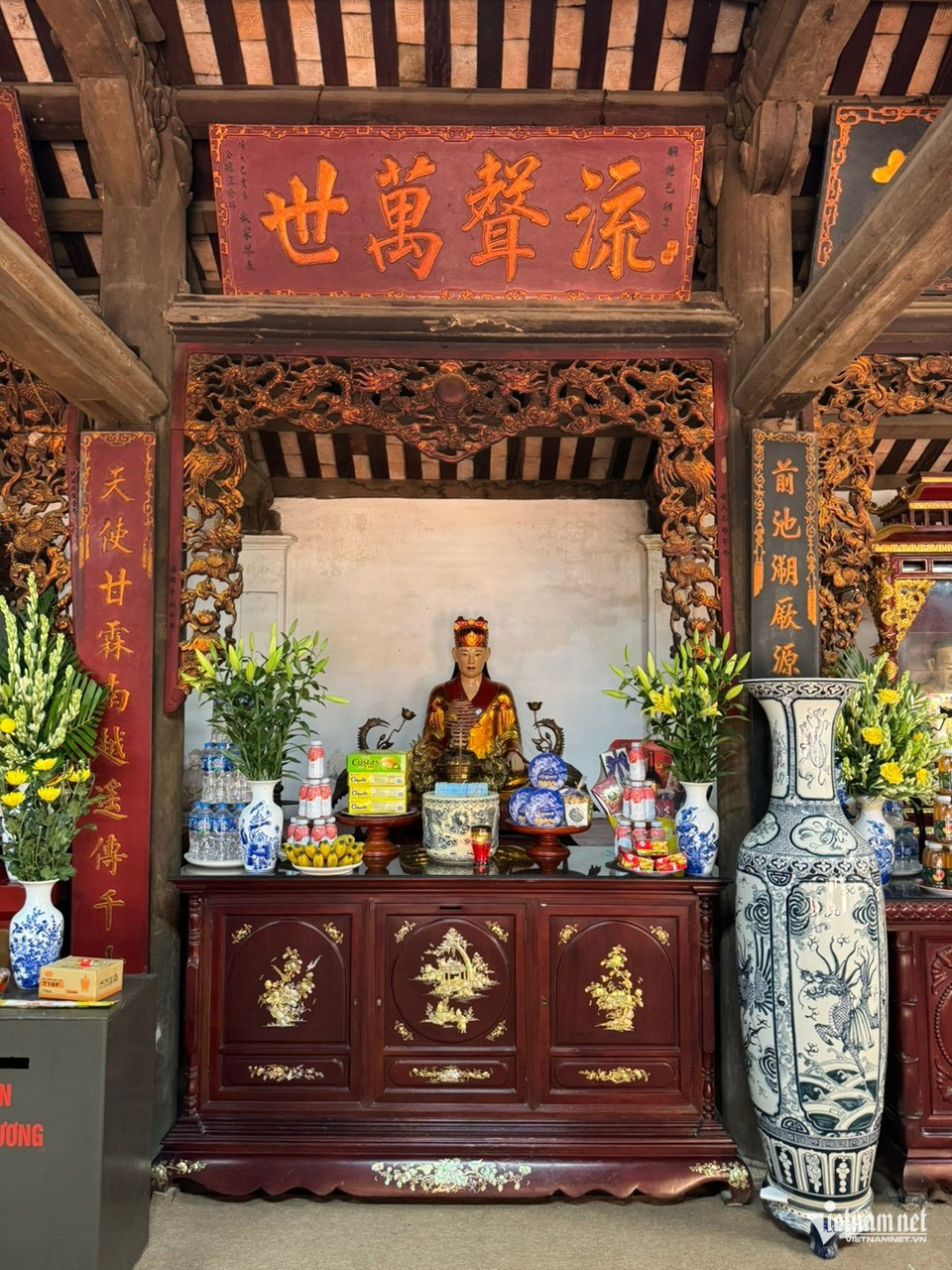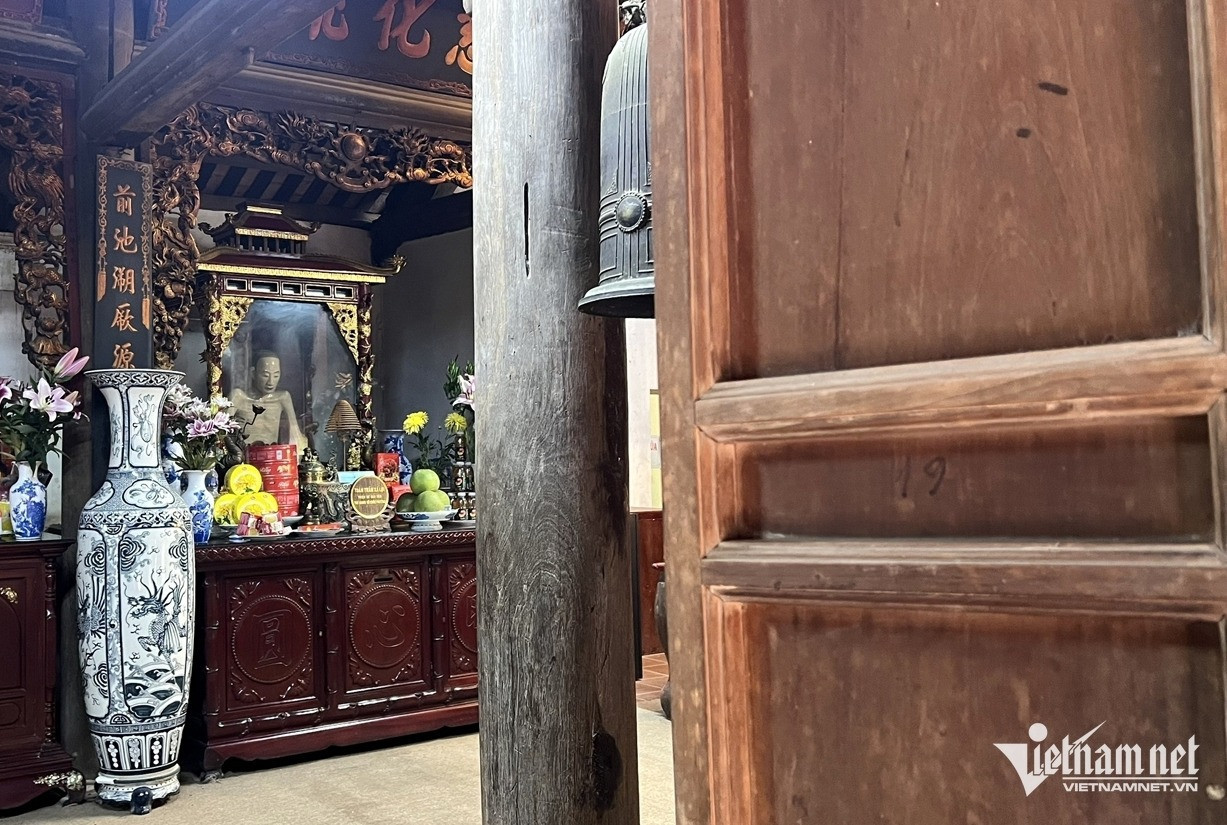My Anh
Dau Pagoda, located in Nguyen Trai Commune, Thuong Tin District, Hanoi, was constructed between 200 and 210 AD. This historic pagoda, over 1,800 years old, was recognized as a A-class historical and artistic relic by the state in 1964.
In 2016, the two monastic relic statues at Dau Pagoda were designated as national treasures. Dau Pagoda is renowned as the first pagoda in Vietnam to house such relics.
Surrounded by fragrant lotus ponds, the pagoda has become a popular destination for students seeking good luck before exams. During a visit in late June, the serene and expansive grounds of the pagoda were bustling with students and their parents offering prayers.
Dau Pagoda was originally built to pray for favorable weather and abundant harvests. King Le Than Tong significantly renovated it in the early 17th century, bestowing it with the title "First Scenic Landscape."
The pagoda spans approximately 8 hectares, although it once encompassed 80 Vietnamese acres (3,600sq.m/acre) of farmland. The government distributed most of the farmland to the public during a period without a resident monk from 1986 to 1993. In 2000, the pagoda negotiated with locals to repurchase some land, restoring part of its original area.
Dau Pagoda is famous for housing the relics of two monks who achieved enlightenment in the early 17th century. Zen Master Vu Khac Minh passed away in 1639, leaving behind his whole-body relic. His disciple, Vu Khac Truong, also attained enlightenment and left behind a similar relic.
In 1983, scientists transported the statues to Bach Mai Hospital for X-ray analysis, confirming that they were indeed the preserved bodies of the two monks. The scans revealed intact skeletal structures and brain matter within the skulls, ruling out mummification methods involving organ removal.
According to Venerable Thich Quang Minh, the abbot of Dau Pagoda, these relics have naturally preserved for nearly 400 years without any human or scientific intervention. The bodies remain in their natural state, with the joints and bones intact without the use of adhesives.
The relics are currently housed in glass cases within the pagoda. They were left undisturbed from 1639 until 1983, when they were moved for examination. Since then, they have been placed back in the main hall.
Stone inscriptions at the pagoda, translated by the Han Nom Institute, indicate that Zen Master Vu Khac Minh passed away in 1639. Both he and Vu Khac Truong were members of the Vu Khac family lineage and practiced asceticism for 100 days before passing, resulting in their bodies gradually losing organic material and leaving only bones covered by skin.
In 2016, the relics were officially recognized as national treasures by the government. Despite their designation, the relics continue to be preserved naturally without any scientific intervention. The outer layer of the relics is coated with a 0.03mm layer of traditional lacquer, which was last renewed in 2003.
